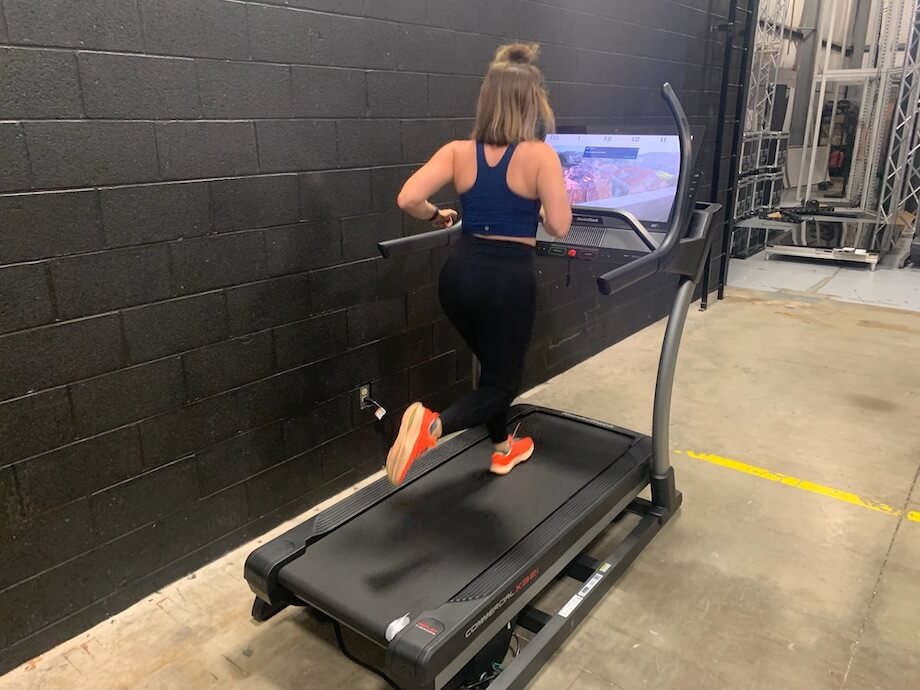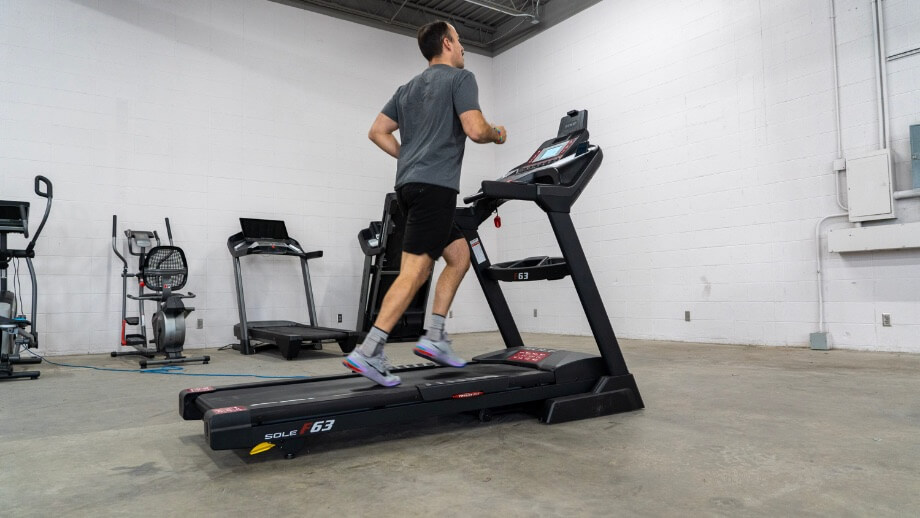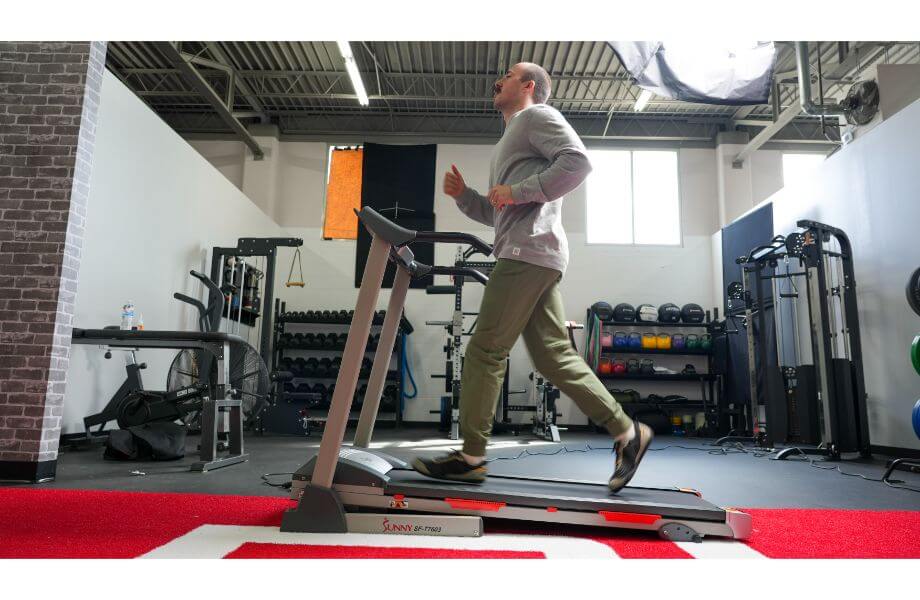We test and review fitness products based on an independent, multi-point methodology. If you use our links to purchase something, we may earn a commission. Read our disclosures.
The terms jogging vs running are often used interchangeably, but is there a difference between the two? Some runners might give you the side-eye if you call them a jogger, as most people view jogging as a slower, more lax form of running. But plot twist, there’s no set definition that distinguishes jogging from running, and depending on your goals, one is not necessarily better than the other.
The concept of jogging originated from Dr. Arthur Lydiard, an Olympic track coach from New Zealand. He encouraged his former athletes to stay in shape by going for “easy runs,” or jogs. Now, decades later, people are jogging for their health all over the world.
Still, there are no clear guidelines that indicate when you’re jogging and when you’re running. However, most people consider running speed to be the main difference between the two. Differences in running pace also come with other variations like your running form and exertion level.
In reality, it boils down to fitness level and personal preference. Both can be excellent forms of aerobic exercise, and no matter why you lace up your running shoes, both forms of physical activity offer plenty of health benefits.
Form
Whether you’re in the thick of marathon training or taking a jog around the block, your running form matters. The proper running form can help you maximize your effort and run efficiently. Efficiency is the name of the game, from the top of your head to every foot strike.
Here are a few tips to remember about your form when jogging and running:
- Keep your head up with your gaze looking out.
- Lean slightly forward.
- Keep your shoulders in a neutral position.
- Bend the elbows around 90 degrees.
- Engage your core muscles.
- Lift your knee with a flexed foot.
- Push from the back leg and aim for a mid-foot strike as the other leg comes down.
Not too tricky, right? But let’s say your buddy asks you to go for a jog. How does that change your running form? Not by much, actually. Even though your mile pace may be slower, your form looks much the same. Engage your core, keep your upper body in a neutral position, aim for a mid-foot strike, and keep your gaze looking out.

But—and this is a big “but”—remember that your running form is unique. If you have questions about form, your running coach or certified personal trainer can offer guidance based on your specific structure.
And as far as breathing goes (yep, there’s a science to how you breathe on a run), try to breathe from your diaphragm. Breathe in through your nose and out through your mouth, and find a pattern that works for you. A good place to start is the five-count or 3:2 pattern.
With the 3:2 pattern, you inhale for three strides and exhale for two. When your body is demanding more oxygen, you can transition to the 2:1 pattern, where you breathe in for two strides and out for one.
Exertion
Exertion, or physical effort, is a key factor in the jogging vs running conversation. Since jogging is usually associated with a slower pace than running, we can assume jogging requires less exertion per stride.
Some beginners may feel more comfortable starting with a jog because of the perceived lower level of exertion. Still, that difference in exertion can be instrumental in all kinds of training plans. Maybe your jog is perfect for a warm-up and cool-down before you amp up to your higher-intensity exercise.
Heart rate is a practical way to gauge exertion since increased exertion translates to a higher heart rate. For example, sprint intervals will increase your heart rate faster than a 12-minute mile. Not because one workout is better than the other, but because one demands more effort from your heart, lungs, and muscles in the moment.
Pace
Most people associate jogging with a slower pace or running cadence, but we have to remember that it’s all relative. What’s considered a slower pace for you might be a faster pace for me. And that’s alright, alright, alright, because your run is your own.
Plus, while jogging may have a slower mile pace, you might be able to last for a more extended amount of time than you would running at a faster pace. A faster running speed requires more exertion, which may limit the length of your run.

So you do you, boo. Make your mileage and cardio workout what you need them to be.
Health Benefits
While the health benefits of running might be different than the benefits of jogging, they can both improve your overall wellness and help you reach your fitness goals.
The current Physical Activity Guidelines for Americans1 recommend that the average adult gets 150 minutes of moderate-intensity physical activity and two days of strength training per week. This can be spread over several days as it makes sense to you and your training schedule.
According to the Centers for Disease Control and Prevention (CDC)2, running and jogging count as vigorous-intensity exercise, meaning you get a little more bang for your buck. Theoretically, you can run or jog for approximately 75 minutes to get the same health benefits as power walking for 150 minutes.
Related: Calories burned walking a mile
Running (at any pace) can help lower the overall risk of chronic disease. For example, running can help strengthen our bones, muscles, and cardiovascular health. A November 2019 systematic review published in Sports Medicine3 confirmed that running regularly can reduce resting blood pressure. The previously mentioned review concluded that the degree of changes could vary based on exercise intensity and time, but nonetheless, it’s encouraging for those affected by hypertension.
Running and jogging can also be valuable tools on a journey to weight loss. For example, a 2016 observational study4 published in the Journal of Sports Medicine and Physical Fitness concluded that running, without consideration of pace, can be an influential factor in weight management.
And can we talk about the mental health benefits that a simple run can provide? Going for a run or jog allows us to be in the moment without outside distractions or responsibilities. In fact, a May 2021 systematic review5 of 58 studies published in Frontiers Psychology found that recreational running can be associated with improvements in mood, depression, anxiety, and stress. Yes, please.
While running and jogging offer abounding health benefits, it’s important to remember that the best exercise for optimal overall health is one you can do on a regular basis. Be sure to speak with your medical provider if you have questions about how physical activity relates to your health.
RELATED: Post-Run Stretches
Jogging vs Running: Final Thoughts
Whether you call yourself a runner or a jogger is up to you, but here at GGR, we’ll give you a high five either way. While there is no set definition that distinguishes jogging from running, there are implied differences between the two. Still, those differences are subjective, and both forms of exercise can be proponents of good health.
- You don’t have to be an Olympic athlete to call yourself a runner.
- Jogging and running forms are much the same. Running vs jogging speed is typically seen as the primary difference.
- You may be able to jog for longer periods than you would when running at a faster speed.
- Jogging can be an essential part of a quality warmup and cooldown.
- Running and jogging offer a wide range of health benefits, including improved cardiovascular health, increased strength and endurance, and improved mental health.
- There is still room for further studies regarding jogging vs running for weight loss, but current research indicates both can play a role in weight management.
Jogging vs Running FAQs
Is it better to jog or run?
The best part about running (or jogging) is making your workout your own. The running vs jogging debate is primarily based on personal preference and individualized fitness level. No matter your training goals, your training plan likely has room for both.
How is jogging different from running?
Jogging is often characterized as a slower form of running. As a result, you’ll likely see a difference in your running form and exertion level at a slower pace.
Will jogging reduce my tummy fat?
Jogging can be an effective fat-burning exercise, but toning your abdominal area requires more than just aerobic exercise. Well-balanced nutrition and strength training are essential when trying to lose belly fat.
How do you breathe when running?
Rhythmic breathing is critical when running. Try to breathe from your diaphragm, breathing in through your nose and out your mouth. One of the most common rhythms for distance runners is the five-count or 3:2 pattern. For this, you will breathe in for three strides and exhale for two.
However, if you encounter a point in your run where you cannot maintain the 3:2 pattern because your body is demanding more oxygen, you might transition to a 2:1 pattern where you breathe in for two strides and out for one.
References
- U.S. Department of Health and Human Services. Physical Activity Guidelines for Americans, 2nd edition. Washington, DC: U.S. Department of Health and Human Services; 2018.
- Centers for Disease Control and Prevention. (2022, June 2). How much physical activity do adults need? Centers for Disease Control and Prevention. Retrieved November 17, 2023, from https://www.cdc.gov/physicalactivity/basics/adults/index.htm
- Igarashi, Y., Nogami, Y. Running to Lower Resting Blood Pressure: A Systematic Review and Meta-analysis. Sports Med 50, 531–541 (2020). https://doi.org/10.1007/s40279-019-01209-3
- Nielsen, R. O., Videbaek, S., Hansen, M., Parner, E. T., Rasmussen, S., & Langberg, H. (2016). Does running with or without diet changes reduce fat mass in novice runners? A 1-year prospective study. The Journal of sports medicine and physical fitness, 56(1-2), 105–113.
- Pereira, H. V., Palmeira, A. L., Encantado, J., Marques, M. M., Santos, I., Carraça, E. V., & Teixeira, P. J. (2020). Systematic Review of Psychological and Behavioral Correlates of Recreational Running. Frontiers in Psychology. https://doi.org/10.3389/fpsyg.2021.624783
Further reading

See how this entry-level treadmill stacks up in our ProForm Cadence LT Smart Treadmill review. Read more

In this Future App review, I’ll tell you why you should consider this innovative, digital, personal training experience. Read more

The Exxentric kPulley2is a flywheel training machine that is deceivingly simple in its operation, but brutal in its application. Although there are other flywheel machines available, Exxentric is by far the leader and the kPulley2 can add a ton of variety to any home gym, if you’re willing to spend the money. Read more

In our Dynamic Infrared Sauna Review, we’ll go over this affordable low-EMF sauna and whether it performs as well as the competition. Read more

